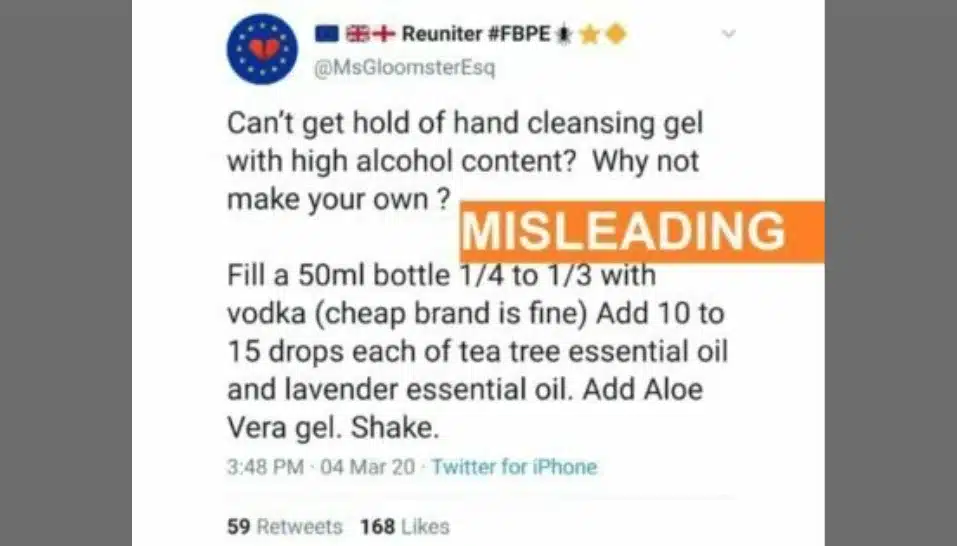From TikTok videos to twitter posts and WhatsApp forwards, social media is abuzz with do-it-yourself (DIY) guides on how to make sanitisers at home. However, public health officials are wary of home-made sanitisers.
As coronavirus anxieties intensify and the demand for hand sanitisers outweighs its current supply, social media is inundated with do-it-yourself (DIY) guides on how to make sanitisers at home. From TikTok videos to twitter posts and WhatsApp forwards, it’s impossible to miss the growing breed of hand sanitiser makers!
The ingredients: The common ingredients in hand sanitisers, as per social media guides, include rubbing alcohol, aloe vera gel, any essential oil (tea tree, almond, lavender), lemon, glycerine, and boiled water. Some of the more adventurous recipes include vodka and other spirits.
The method: Most guides to make hand sanitisers at home are fairly simple. All one needs to do is mix the ingredients and voila, the magic potion is ready!
Scientifically speaking: Public health officials are wary of home-made sanitisers for several reasons.
*Correct alcohol concentration is of utmost importance. According to WHO, anything lower than 60 per cent won’t be as effective in killing the virus. However, when you make the disinfectant at home, it’s not very easy to ascertain the actual alcohol content.
*Too much alcohol is also a cause for worry as the user could end up hurting his/her hands. It’s important to have the right amount of glycerine or essential oils in the sanitiser to moisturise the skin.
*There is no scientific evidence to prove the effectiveness of vodka or any other spirits in sanitisers.
Better alternative: Public health officials from across the globe concur that hand washing is the most effective way to stop the spread of COVID-19.
* Handwashing – with soap and water for more than 20 seconds – is more effective for disease prevention because soap removes certain microbes as well as traces of pesticides and heavy metals that hand sanitisers simply can’t.
* While hand sanitisers offer convenience, they are not always preferable. Especially, if the users’ hands are visibly dirty or greasy.
*The accidental ingestion of hand sanitizer, especially in young children, can cause alcohol poisoning.
Bottom line: When it comes to hand hygiene, DIY hand sanitizer may not be your healthiest bet. If you can, use soap and water.
However, if you must try it at home, follow the handmade hand sanitiser recipe from the World Health Organization (WHO) — intended for local production in those parts of the world where clean water and commercial sanitiser are scarce or unavailable. The recipe contains 99 per cent isopropyl alcohol (rubbing alcohol), a bit of hydrogen peroxide and a moisturising agent, such as glycerol or aloe vera gel. You can read more at https://www.who.int/gpsc/5may/Guide_to_Local_Production.pdf.
Take a part in curbing medical misinformation!
If you receive any video, photo or any kind of information that is doubtful or if you are not convinced of a post or message on the internet related to health and medicine, forward it to our mailbox at editor.haindia@gmail.com


















Add Comment